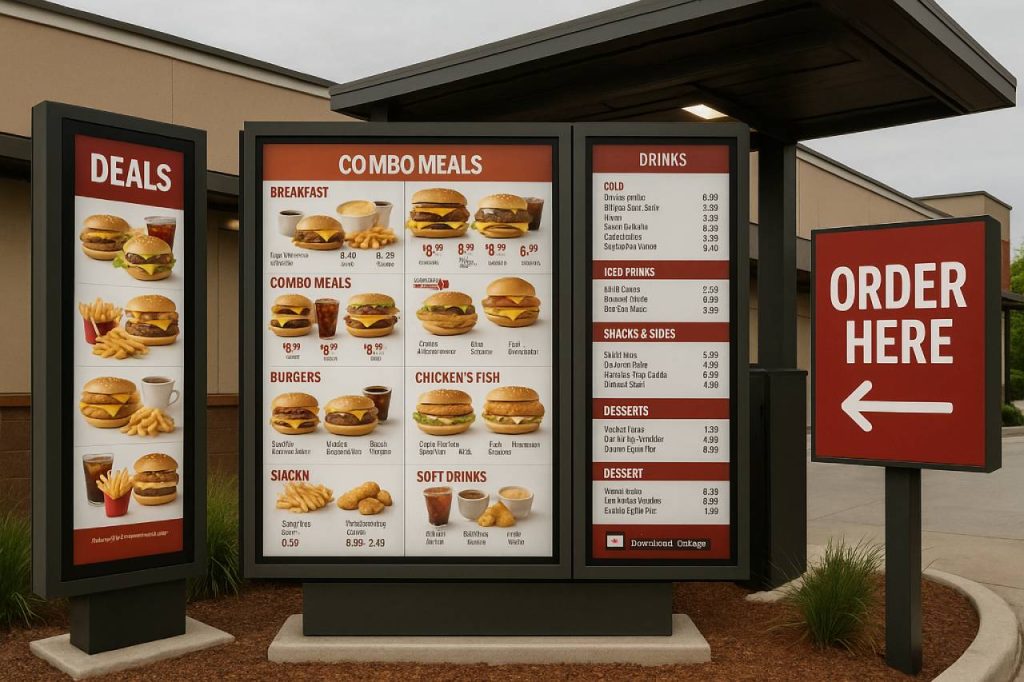Nowadays, convenience is king and there are few innovations in the restaurant industry have proven as consistently valuable as the drive-thru. For quick service restaurants (QSRs), drive-thrus not only offer convenience for customers but it is an added revenue stream that concurrently increases overall business efficiency. If your restaurant has the space, checks the zoning “boxes” and has town approvals to make a drive-thru happen, it is the best investment you can make.

The Drive-Thru Advantage
The additional revenue that can be had with a drive-thru cannot be understated. The statistics don’t lie. Locations with a drive-thru lane see an average of 60-70% of their sales pass through the drive-thru. In the case of some larger chains, or driven by food/drink type, these numbers can even reach 75-80%. The convenience factor of having one set up will net you sales you either may never get and prevent you from losing sales to a competitor who also has a drive-thru lane.
Higher Throughput and Volume
Adding a drive-thru is not enough. Operational efficiency must be taken into consideration. For example, you may not be able to offer your entire menu due to prep times. In addition, your windows, kitchen setup and work stations should coincide with what flows best from order received to handing the food and drink over. The design of the menu board graphics or displays is also imperative to make sure your customer can find what they want, and what you want, as quickly as possible. All of this, and more, impacts the speed through the drive-thru which translates to more transactions by hour, day and week. If setup optimally customers are more likely to choose a drive-thru if they believe it will be faster than going inside. This helps you capture traffic that might be lost due to long dine-in or walk-in wait times.
Improved Customer Convenience and Loyalty
With mobile ordering, contactless transactions and pickup becoming more and more common, the drive-thru adds another layer of convenience for these purposes. Rather than going inside, mobile orders can be picked up through the drive-thru. Have enough room? Skip the regular line and go through the “mobile order” line that doesn’t require communication or signage. People are more and more consumed with their day-to-day responsibilities and making their life easier bodes well for the future. That convenience drives repeat visits and builds long-term customer loyalty.
Backup for Unsuspected Scenarios
The COVID-19 pandemic drove home just how critical drive-thrus are to restaurant survival and success. Restaurants with drive-thrus had the benefit of continuing to operate at above average capacity during that time. Remember, 60-70% of the business goes through the drive-thru regardless of circumstances. Has an illness wiped out a bunch of your staff? No problem, shut down the dining area and continue to service mobile orders and customers through your drive-thru with a skeleton crew.
Quantifying the Revenue Potential
When paired with mobile orders, drive-thru tickets are typically larger than the dine-in crowd. Modern upselling capabilities both online and at the drive-thru are tailored by your ordering behavior and past orders. These tools generate incremental additions that add up quickly.
A single efficient drive-thru lane can serve 150-200 cars during a busy lunch or dinner rush, and with an average receipt of $8–$12, which translates to $1,200–$2,400 per hour in potential sales.
Final Thoughts: Is a Drive-Thru Right for You?
As mentioned, if your location and traffic pattern meets the requirements to add a drive-thru, it would be advantageous to do so for all the reasons listed above. It also helps future-proof your business in an evolving consumer landscape that values speed, safety, and convenience.
Yes, there is a cost associated with the addition of a drive-thru. This can range depending on several factors. For example, architect involvement, engineered drawings, site redesign, infrastructure setup, the product cost themselves, etc. That said, investing allows for the potential return that can quickly outweigh those expenses. In many cases, restaurants see a 20–30% increase in total revenue within the first year of adding a drive-thru.
In a competitive QSR market, adding a drive-thru is no longer a luxury, it’s a strategic necessity. If your goal is to increase revenue, capture more traffic, and improve customer experience, the drive-thru lane could be your restaurant’s most profitable new addition.
Interested in exploring what a drive-thru could do for your location? We can help you assess space, cost, and potential ROI—just reach out!